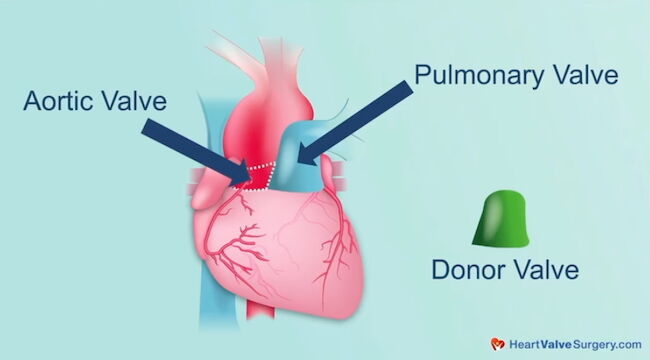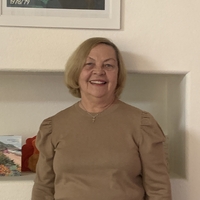Ross Procedure Donor Valves: Is There A Waiting List?
Written By: Allison DeMajistre, BSN, RN, CCRN
Medical Expert: Joanna Chikwe, MD, Chair of Cardiac Surgery, Cedars-Sinai Medical Center, Los Angeles, California
Reviewed By: Adam Pick, Patient Advocate, Author & Website Founder
Published: August 14, 2025
The Ross Procedure is an advanced form of aortic valve replacement that is not nearly as well known or publicized compared to popular mechanical or tissue valve aortic replacement operations.
During the Ross Procedure, the patient’s pulmonary valve is switched into the aortic position. Then, a human donor valve is implanted in the pulmonary position. While the Ross Procedure is a complex that should only be performed by expert surgeons, new research suggests that the Ross Procedure provides patients enhanced survivability and a normal life expectancy without the use of blood thinners.
For this reason, many patients in our community are interested in learning more about the Ross Procedure. One such patient is Carla, who sent us a great question on Facebook. Carla asked, “If I choose to go with the Ross Procedure, do I get put on a waiting list for the donor valve, or do they have them ready for implant?”
I recently met with Dr. Joanna Chikwe during a trip to Cedars-Sinai in Los Angeles, California. She is the chair of cardiac surgery and has extensive experience in the Ross Procedure. I asked if she would answer Carla’s question and explain what a donor valve is in the Ross Procedure.
Key Learnings About Ross Procedure Donor Valves
Here are important insights shared by Dr. Chikwe:
- Why replace the aortic valve with the pulmonary valve? “I love that question,” said Dr. Chikwe. “So, when we do the Ross Procedure, we’re moving a valve from the right side of the heart to replace the aortic valve and replace the valve that we moved with a donated pulmonary valve.” Dr. Chikwe said that patients often ask her in the office, “Why don’t you just put the donated valve in the aortic position?” Dr. Chikwe said, “It’s because the donated valve just doesn’t work as well in the aortic position. It wouldn’t be much better than doing a regular heart valve replacement with an animal or tissue valve.”

- Are there donor valves at the hospital readily available for a Ross Procedure? “Do we have valves on the shelf for that? Yes, we do,” said Dr. Chikwe. “At a busy Ross Center like Cedars Sinai, we have three or four pulmonary grafts on the shelf just to use when we have Ross Procedures scheduled. We look for the youngest, largest, and best size and implant them. I think I have a Ross Procedure next week, and there will be two on the shelf to pick from.”
Thanks Dr. Chikwe and Cedars-Sinai!
On behalf of Carla and our entire patient community, thank you to Dr. Joanna Chikwe for sharing the details about donor valves and the Ross Procedure. We also want to thank the whole team at Cedars-Sinai Medical Center in Los Angeles for taking great care of heart valve patients!
Related links:
- Life Expectancy and Heart Valve Disease: What Patients Should Know?
- Surgeon Q&A: Stopping The Heart During Cardiac Surgery
- A Very Memorable Letter From Dr. Donald Ross, Inventor of the Ross Procedure
- Surgeon Q&A: Top 5 Complications After Heart Valve Surgery
Keep on tickin,
Adam
P.S. For the deaf and hard-of-hearing members of our patient community, we have provided a written transcript of our interview with Dr. Chikwe below.
Video Transcript
Adam Pick: Hi everybody. It’s Adam with heart valve surgery. com and we are at Cedar Sinai Medical Center in Los Angeles, California. I am thrilled to be joined by Dr. Joanna Chikwe, who is the chair of cardiac surgery. Dr. Chikwe, it is great to see you again, thanks for being with me.
Dr. Chikwe: Pleasure, Adam.
Adam Pick: We’re here at Cedars and we’re going to answer some patient questions while I’ve got you here. Just had a question come in from Carla at Facebook. This is very near and dear to my heart. It’s all about the Ross procedure. As you may know, I had a Ross done nearly 20 years ago. I have had no reoperation, and no intervention. Carla asks a great question, “If I choose to go with the Ross Procedure, do I get put on a waiting list for the donor valve or do they have them ready for implant?” And maybe Dr. Chikwe, you can share what a donor valve is in the Ross procedure.
Dr. Joanna Chikwe: Love that question. So when we do the Ross Procedure, we’re moving a valve from the right side of the heart to replace the aortic valve. And, we replaced that valve that we moved with a donated pulmonary valve. Patients always ask me in the office, “Why don’t you just put the donated valve in the aortic position?”
That’s because it just doesn’t work as well in the aortic position. It wouldn’t be much better than doing a regular heart valve replacement with an animal (tissue) valve. Do we have valves on the shelf for that? Yes, we do. At a busy Ross Center like Cedars Sinai, we have three or four pulmonary grafts on the shelf just to use for when we have Ross procedures scheduled.
Adam Pick: Wow, so you literally take them off the shelf and implant them.
Dr. Joanna Chikwe: We basically look for the youngest, the largest, the best size, and we implant them. think I have a Ross Procedure next week, there’ll be two on the shelf to pick from.
Adam Pick: Fantastic. Well, I hope that helps you, Carla. I know it helped me. And Dr. Chikwe, as always, thanks for everything you and your team are doing here at Cedars Sinai in Los Angeles. Thanks for being with me today.
Dr. Joanna Chikwe: Appreciate it. Thank you,




